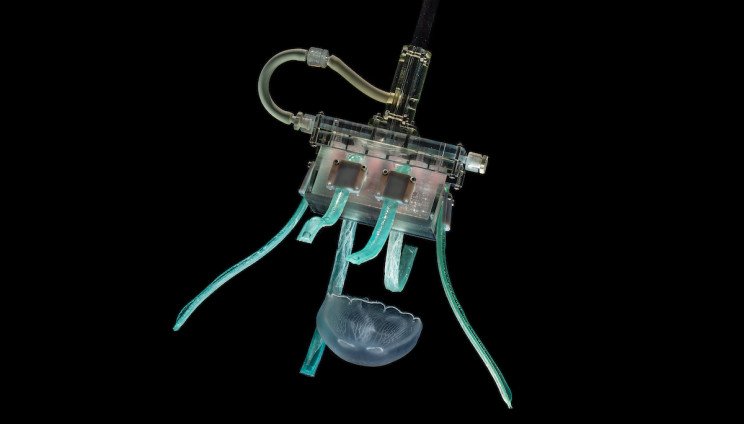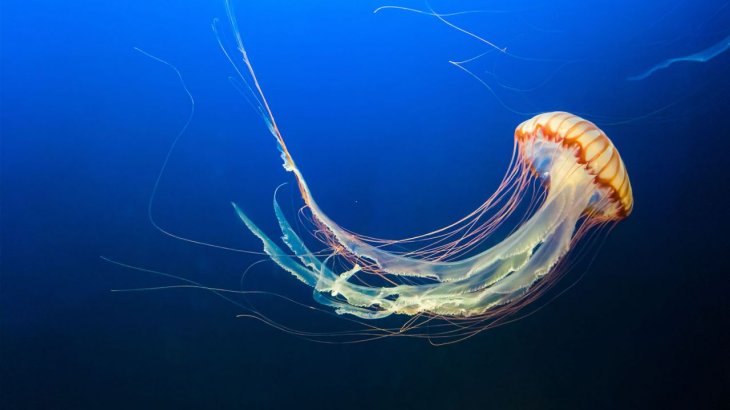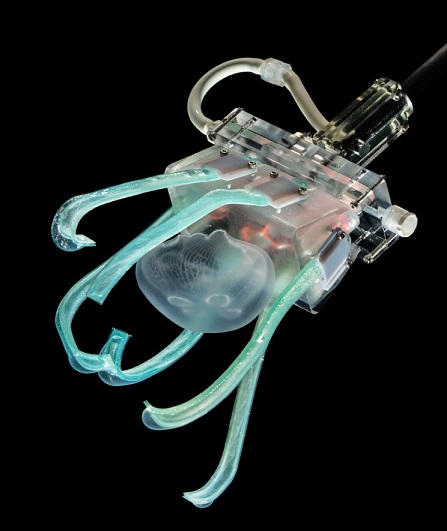This Ultra-soft Robotic Hand Captures Jellyfish Without Causing Harm
Har Devarukhkar - Oct 04, 2019

Since scientists need to examine jellyfish but they are too soft to handle, a robotic hand is built to collect them without damage.
- This 7-Ton Building 'Walks' To Its New Location With 200 Robotic Legs
- This Gaming Glove Lets You Control Games With Just Hand Gestures
- This Basketball Backboard Adjusts Itself So Your Ball Cannot Miss The Hoop
95% of jellyfish is water. These living organisms among the most delicate that we can hold in our hands.
What makes jellyfish are so impressive to scientists is that 5% of the tissue left, which is not water. There are some outstanding scientific discoveries in this part such as GFP (green fluorescent protein) which benefits anti-aging.
However, jellyfish are extremely tender, making it hard for scientists to collect them using robotic arms. But now, they have invented a kind of soft robotic gripper.

Ultra-soft robotic hand
To pick up samples, tools aboard ROVs, known as remotely operated vehicles, were used. They were developed largely for gas industries and marine oil, used by marine biologists. Therefore, they are suitable for manipulating and grasping different heavy equipment as well as rocks. However, they are likely to shred those creatures into pieces.
Researchers at Baruch College, CUNY, and Harvard’s Wyss Institute of Biologically Inspired Engineering invented an extremely soft robotic gripper. It looks like a hand and can capture a jellyfish while causing no harm. Described in Science Robotics, water is pumped into tubes that look like fingers, offering a delicate grip.

In a press release, Ph.D. Nina Sinatra, a Google’s materials and mechanical engineer, also the first author of this technology, shared that this super-soft robotic hand is a huge development in comparison to other existing devices used to collect soft-bodied creature samplings in the deep sea. For older technology, it is almost impossible to gather samples intact. Moreover, it can be used to develop other underwater searching techniques, allowing extensive discoveries to the marine organisms’ genetic and ecological features instead of forcing them leaving the water.
Amazingly gentle grip
The gripper has six fingers. They are flat, thin and made from silicone. Inside them is a hollow channel bonded to a stiff but flexible polymer nanofiber layer. These six fingers are connected to a 3D-printed palm that has a rectangular shape and is made from plastic. When the water is filled inside the channels, they curl following the nanofiber-coated side direction.

Approximately 0.0455kPA pressure was exerted from the fingers, which is nearly one-tenth of the pressure that our eyelids make on the eyes. In comparison, the latest finest soft marine robotic hand used to collect tender marine creatures are a little bit stronger than the 95%-of-water creature, apply nearly one kPA.
To test the ultra-soft technology, in the later study phase, the scientists tried to collect living jellyfish at the New England Aquarium. Swimming jelly blubbers, moon jellies, as well as spotted jellies were captured. These creatures are approximately the size of the golf ball.
The test on the new gripper was successful. It could collect a single jellyfish against the palm of the device. The living creature could not escape unless the robotic hand let it go.
Featured Stories

Features - Jul 01, 2025
What Are The Fastest Passenger Vehicles Ever Created?

Features - Jun 25, 2025
Japan Hydrogen Breakthrough: Scientists Crack the Clean Energy Code with...

ICT News - Jun 25, 2025
AI Intimidation Tactics: CEOs Turn Flawed Technology Into Employee Fear Machine

Review - Jun 25, 2025
Windows 11 Problems: Is Microsoft's "Best" OS Actually Getting Worse?

Features - Jun 22, 2025
Telegram Founder Pavel Durov Plans to Split $14 Billion Fortune Among 106 Children

ICT News - Jun 22, 2025
Neuralink Telepathy Chip Enables Quadriplegic Rob Greiner to Control Games with...

Features - Jun 21, 2025
This Over $100 Bottle Has Nothing But Fresh Air Inside

Features - Jun 18, 2025
Best Mobile VPN Apps for Gaming 2025: Complete Guide

Features - Jun 18, 2025
A Math Formula Tells Us How Long Everything Will Live

Features - Jun 16, 2025
Comments
Sort by Newest | Popular